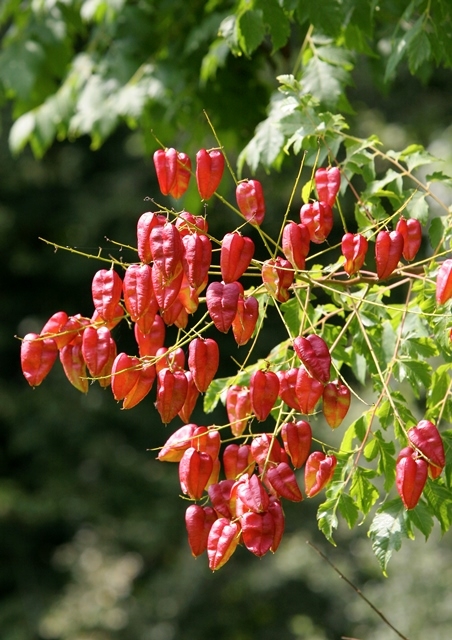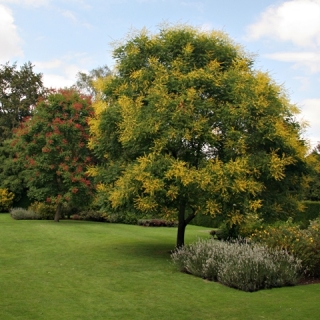Koelreuteria paniculata
Pride of India, Golden Rain Tree
The clusters of small yellow flowers which it produces in July and August are followed by lantern shaped fruits in the autumn.
Read more about this productProduct details
Also known as the Golden Rain Tree this was introduced from China in the 1760s but it is also a native of Japan and Korea.
It is a tougher tree than most credit.
A most attractive rounded tree of medium height it deserves to be more widely grown as it has much to recommend it.
The clusters of small yellow flowers which it produces in July and August are followed by lantern shaped fruits in the autumn.
It does best in dry calcareous soils and in a reasonably sunny position.
I have seen this tree thriving on a narrow soil strip of central reservation in south London taking all urban pollution can throw at it.
For such a pretty tree it can tolerant locations where our native trees would soon succumb to failure.
Mature heights and crown spread can vary depending on environmental conditions
Mature height: 10-15m
Mature spread: 5-9m
It is a tougher tree than most credit.
A most attractive rounded tree of medium height it deserves to be more widely grown as it has much to recommend it.
The clusters of small yellow flowers which it produces in July and August are followed by lantern shaped fruits in the autumn.
It does best in dry calcareous soils and in a reasonably sunny position.
I have seen this tree thriving on a narrow soil strip of central reservation in south London taking all urban pollution can throw at it.
For such a pretty tree it can tolerant locations where our native trees would soon succumb to failure.
Mature heights and crown spread can vary depending on environmental conditions
Mature height: 10-15m
Mature spread: 5-9m
Tree Specifications
Common names
Pride of India, Golden Rain Tree
Mature size
Tree type
Soil type
Shape
Tree features
Growth rate
Tolerances
Seasons of interest























